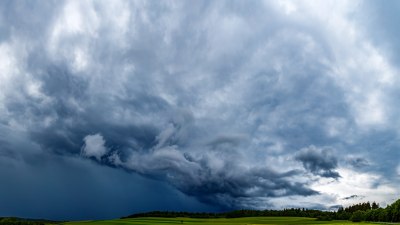Why Do Some Winds Feel Warmer Than Others
Explore the factors that make some winds feel warmer than others, including humidity, temperature, and geographical influences.

Have you ever stepped outside on a windy day and noticed that some winds feel pleasantly warm while others feel biting cold? This phenomenon is multifaceted and can be explained through various meteorological concepts including temperature, humidity, wind source, and geographical influences. Understanding why some winds feel warmer than others can enhance our appreciation for weather patterns and their impact on our daily lives.
The Basics of Wind
Wind is essentially the movement of air from areas of high pressure to areas of low pressure. This movement occurs due to the uneven heating of the Earth's surface by the sun. As different surfaces absorb and release heat at different rates, it creates varying temperature zones which ultimately leads to wind formation. The temperature of the air and the sources from which they originate play pivotal roles in determining the warmth of the wind.
Temperature and Source Regions
The source region of the wind influences its temperature. Winds can originate from different geographical areas: from land, which tends to be warm, or from the ocean, which is generally cooler. For example, winds coming from the desert regions are typically hot and dry, while those coming off the ocean tend to be cooler and more humid. This is why coastal areas often experience a distinct temperature difference between land breezes, which come from the land, and sea breezes, which come from the ocean.
Humidity and Its Effects
Humidity plays a crucial role in how we perceive the warmth of the wind. Air with high humidity contains more moisture, which can make it feel warmer due to the heat retention properties of water vapor. On the other hand, dry air can feel cooler despite having a higher temperature. This is because the evaporation of sweat from our skin can cause us to feel cooler than the actual air temperature. Therefore, a humid warm breeze can feel much more comfortable compared to a dry breeze of the same temperature.
Wind Chill Factor
The concept of wind chill is essential to understanding how wind feels to us. Wind chill refers to the perceived decrease in air temperature felt by the body on exposed skin due to the flow of air. For example, a strong wind can increase the rate of heat loss from the body, making it feel significantly colder than it actually is. Conversely, gentle breezes can feel warmer when tempered by rising ambient temperatures. The body’s response is also crucial; in winds that are warmer than our body temperature, we might feel an uplifting effect, whereas cold winds can lead to discomfort.
Local Topography and Its Influence
Geographical features such as mountains, valleys, and bodies of water can also impact wind temperature. For instance, when air flows over a mountain range, it cools and condenses, leading to the formation of clouds and precipitation on the windward side while the leeward side might experience warmer, drier conditions known as rain shadow effects. Local topography can intensify or moderate the temperature and feel of the wind we experience.
Seasonal Variations
The time of year significantly influences wind temperature as well. During the summer, winds are usually warmer, while winter winds can be chilling, especially if they originate from polar regions. Seasonal shifts also influence humidity levels; for example, summer air tends to hold more moisture, making those winds feel warmer. Additionally, local weather patterns, such as frontal systems or temperature inversions, can drastically change wind temperatures from one season to another.
Microclimates and Urbanization
Urban areas often create microclimates that can alter wind temperatures significantly. Buildings, cars, and other structures absorb heat during the day and release it at night, leading to warmer breezes in urban environments compared to surrounding rural areas. This phenomenon illustrates how human activity can influence not only temperatures but also the quality of wind experienced in different locales.
Climate Change and Weather Patterns
As climate change alters global weather patterns, we may begin to see changes in how winds feel. Increased temperatures can lead to more intense storms and altered wind patterns, making certain winds feel warmer or cooler than in the past. Understanding these changes is crucial for anticipating how winds will behave in various contexts, from daily weather to longer-term climate forecasting.
In summary, the warmth or coolness of the wind we experience is determined by a combination of factors including the temperature and source of the wind, humidity levels, geographical influences, and seasonal variations. Each of these elements interacts in complex ways, contributing to our perception of the wind. Next time you feel a breeze, take note of its origin and the conditions around you; understanding the science behind it may enrich your connection with nature and the environment.











